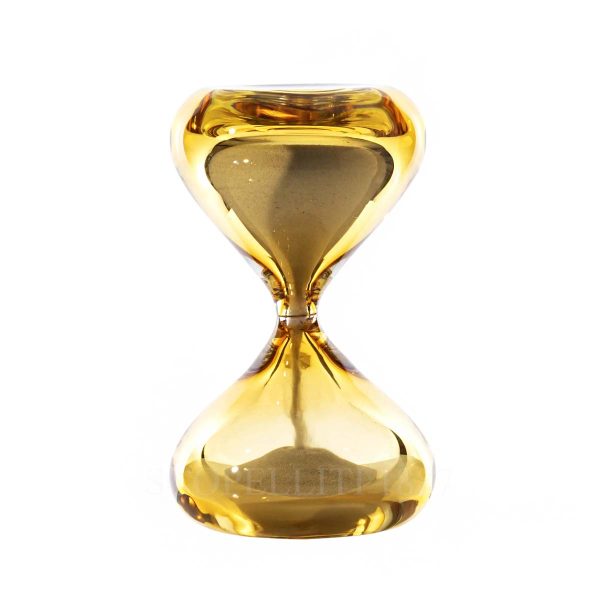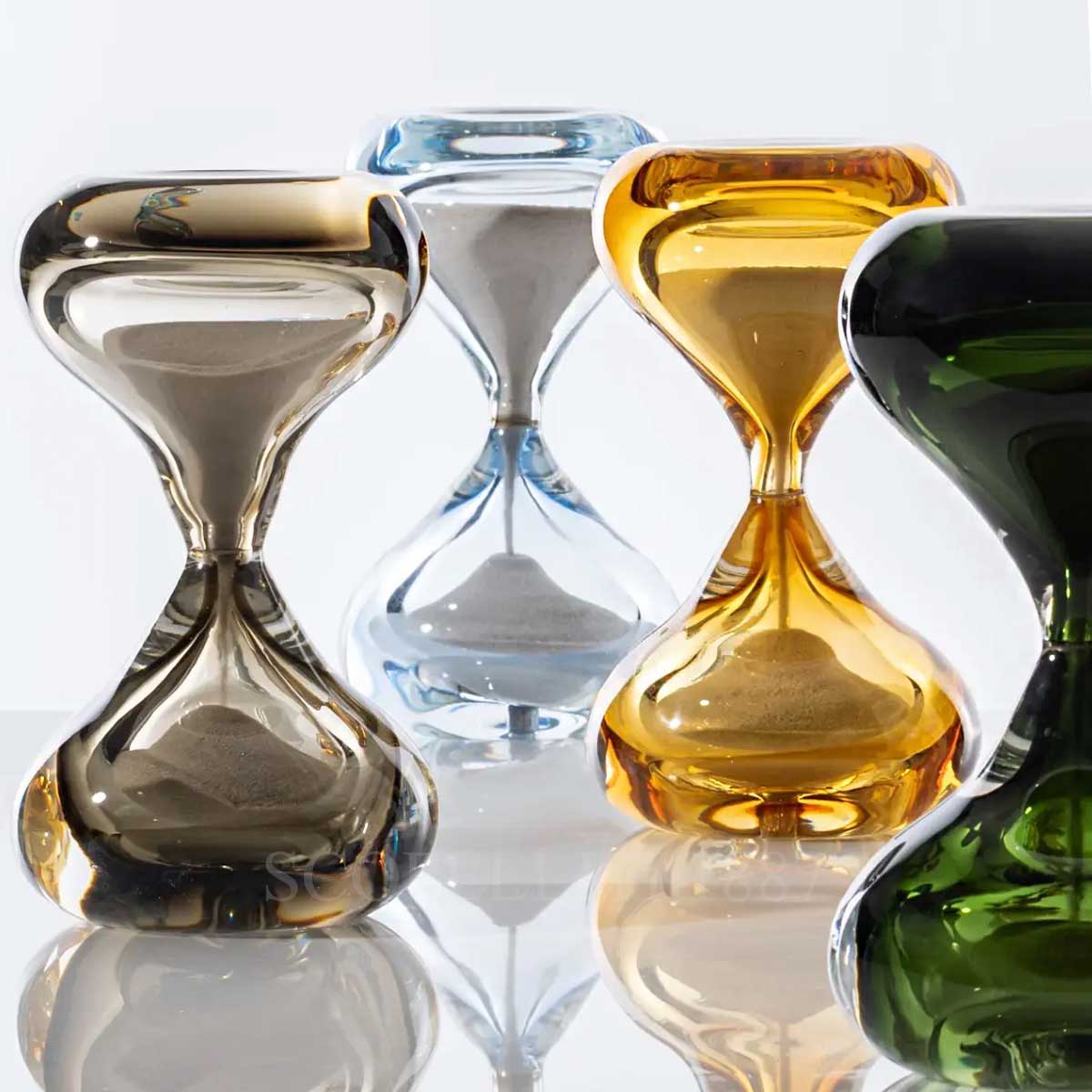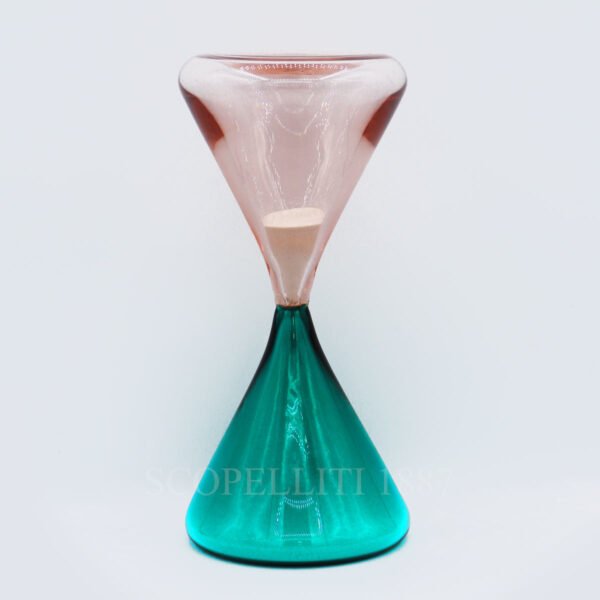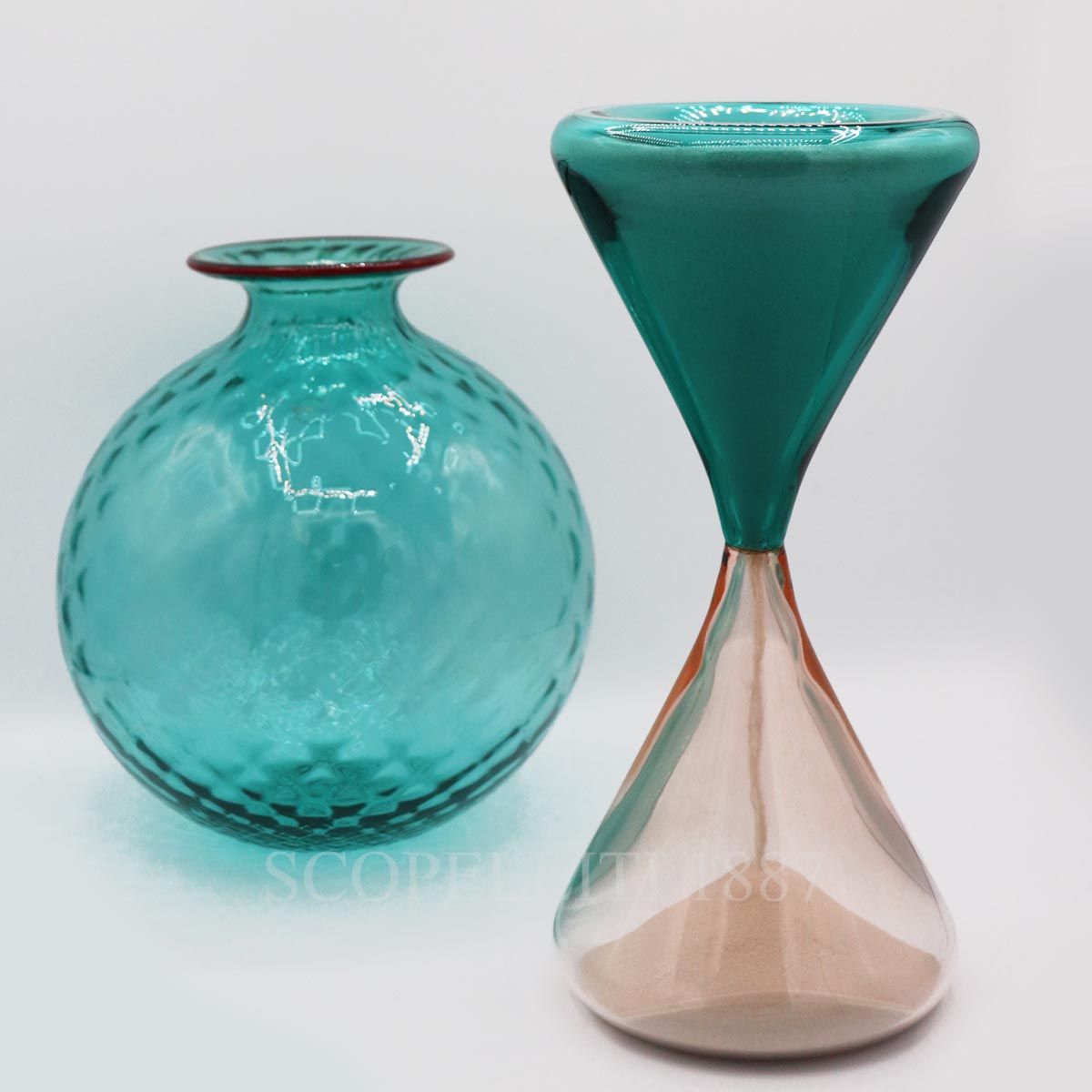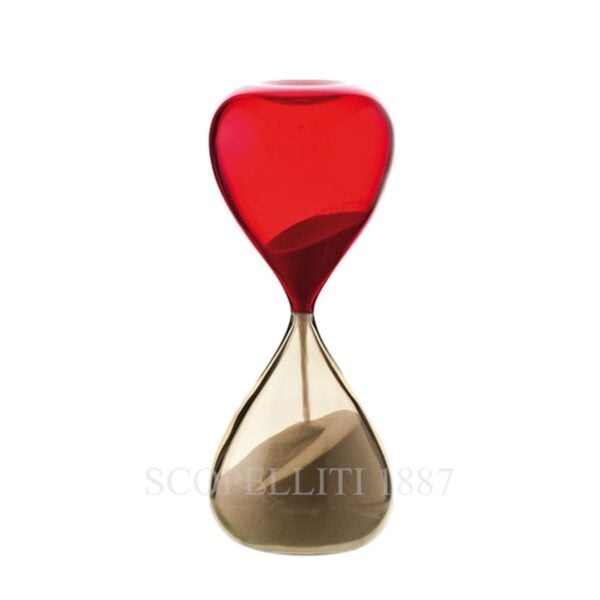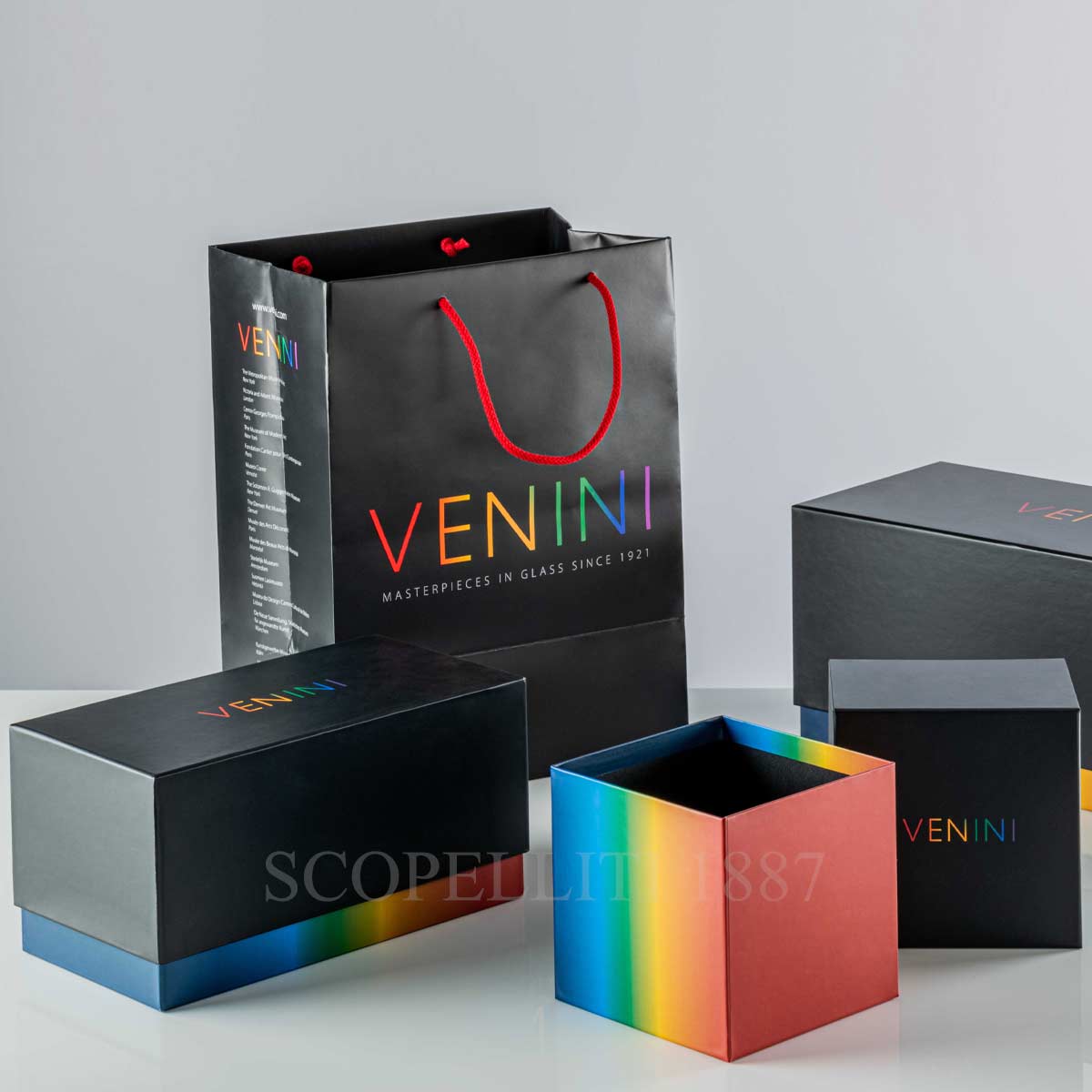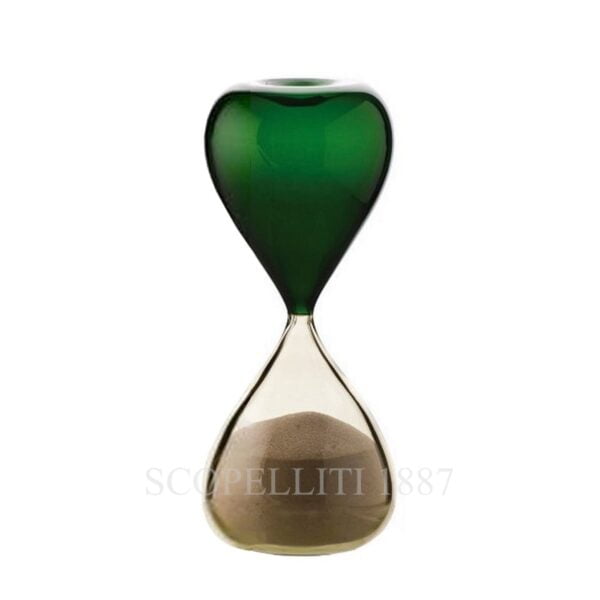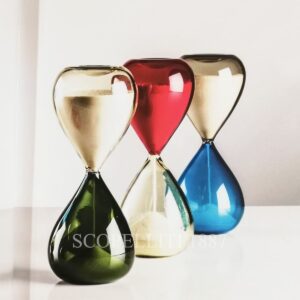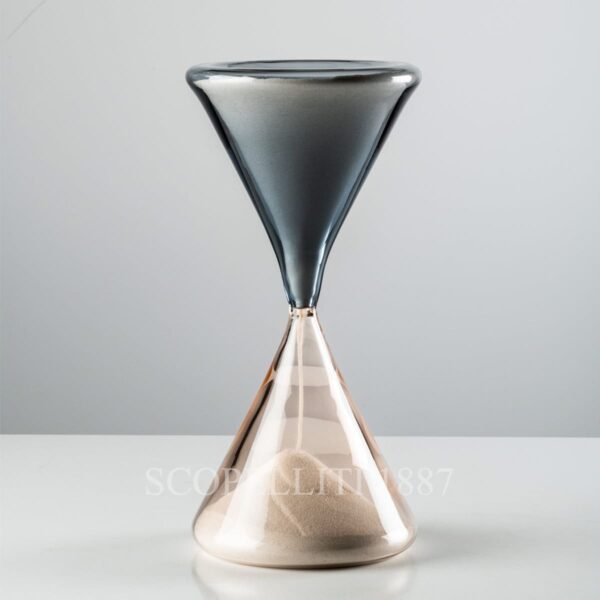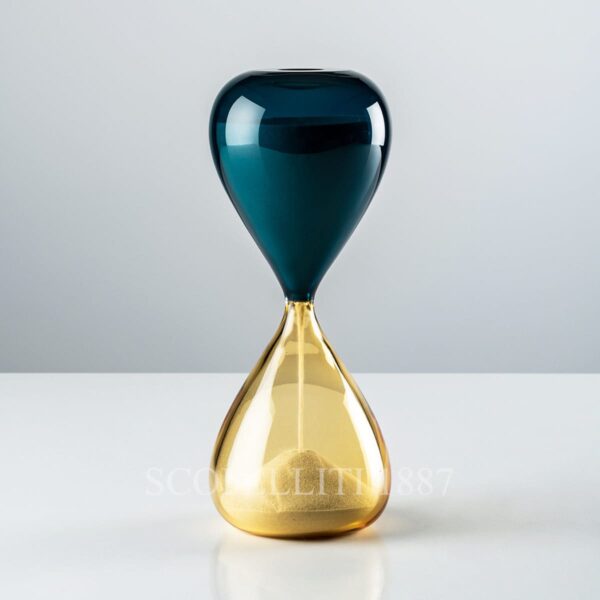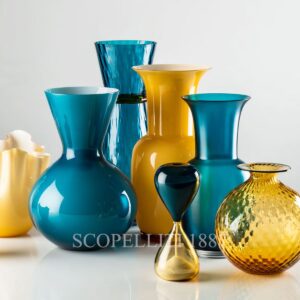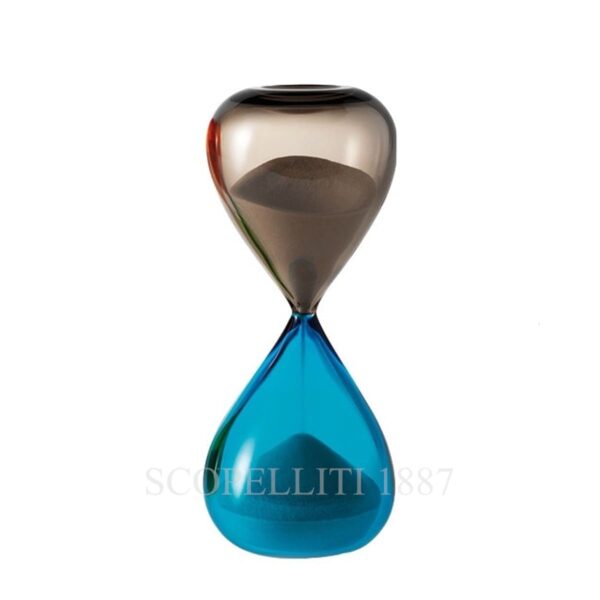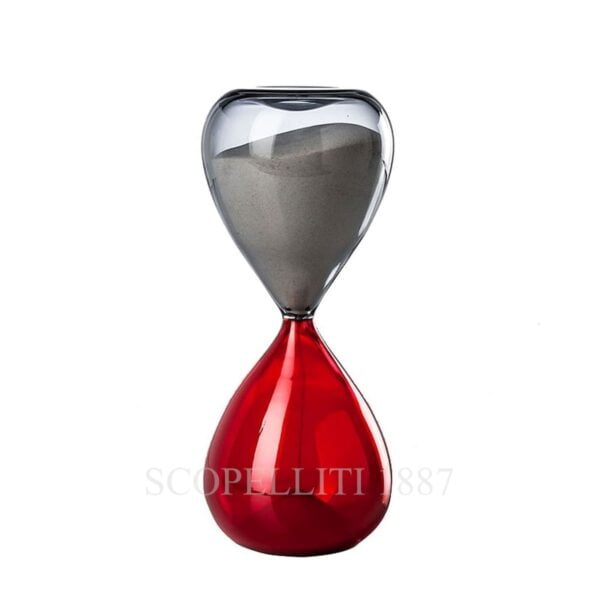Hourglass

“Venini Vases are the glass turned into emotions, balance of the shapes, lines, colors and functions.”

Discover here a fantastic world of mouth-blown Venini Hourglass designed by Fulvio Bianconi & Paolo Venini in 1957!
The fleeting nature of time is captured on glass by Bianconi and Paolo Venini. Hourglass was designed in 1957 and then reinterpreted in 2015. Sand flows slowly, then rapidly turns into glass, suggesting that change can be slow or sudden.
Venini Hourglass ‘Clessidre’ is mouth-blown and worked by hand using the complex “Incalmo” technique which consists in welding together hot glass elements, usually of different colours, in order to create a single object.
The hourglass awakes poetic imaginary. Elements of blown glass enclose the sand, letting it pass but holding it back, as in a perpetual balance between yesterday, today and tomorrow. Both timeless and contemporary in form, the Clessidre hourglass highlights intricate engineering, courtesy of the incalmo technique employed where the two colors meet.
This technique fuses the two colors of glass while the glass is still hot—a true art form. Founded in 1920 on the famed Venetian island of Murano, Italy, Venini Glassworks honors the uncompromising nature of its master craftsmen by tirelessly seeking new, rich colors and textures that move the art form beyond its traditional limitations and make it truly contemporary. Venini’s nearly century-long commitment to both progress and perfection allows them to offer a collection of decorative objects made of hand-blown Murano glass that is as daring as it is exquisite.
Creations bearing the Venini signature have become part of the permanent collections of museums. One of them is the Metropolitan Museum and MoMA in New York, the Fondation Cartier in Paris, and the Victoria and Albert Museum in London.
Venini’s own museum contains 45.000 drawings, 10.000 vintage photos and 4.000 works of art, making it the most precious historical archive of modern and contemporary glass art in the world.
About designer Fulvio Bianconi:
Fulvio Bianconi settled in Milan and collaborated throughout his life with the Milanese publishing houses Mondadori, Bompiani and Garzanti as a graphic designer and illustrator. He also dedicated himself to painting frescos in the Galtrucco stores and in the Pavilions of the Milan Trade Fair. These occupations were combined with his constant passion for glass.
In 1946, Fulvio Bianconi repeatedly went to Murano to study the art of glassmaking. Here he met Paolo Venini, a decisive meeting for both of them: this young man’s creativity marked a breaking point in the history of Venini. Vehement research and experimentation with new glassmaking techniques, which often implies re-elaborating very ancient skills, is a constant in Fulvio Bianconi’s work. New colours and movements emerge in the glass and retrace the bond between the history of Murano and a great modernity.
This contamination between craft and creative flair has given rise to several iconic works, such as the Figure della Commedia dell’Arte, the Tiepolo, the Fazzoletto, the Sirene and the Pezzati.
-
15% OFFVenini
Venini Clessidra Sommersa Crystal Amber Hourglass
1.890,00€Original price was: 1.890,00€.1.607,00€Current price is: 1.607,00€. -
15% OFFVenini
Venini Special Unique Clessidra Hourglass 420.10 mint green rose Limited Edition
1.730,00€Original price was: 1.730,00€.1.471,00€Current price is: 1.471,00€. -
15% OFFVenini
Venini Clessidre Hourglass 420.06 Straw Yellow Red
945,00€Original price was: 945,00€.804,00€Current price is: 804,00€. -
In Stock15% OFFVenini
Venini Clessidre Hourglass 420.06 Green Apple Straw Yellow
945,00€Original price was: 945,00€.804,00€Current price is: 804,00€. -
15% OFFVenini
Venini Clessidra Hourglass 420.10 Grape Rose
1.730,00€Original price was: 1.730,00€.1.471,00€Current price is: 1.471,00€. -
1 In Stock15% OFFVenini
Venini Clessidre Hourglass 420.06 Amber Horizon
945,00€Original price was: 945,00€.804,00€Current price is: 804,00€. -
15% OFFVenini
Venini Clessidre Hourglass 420.06 Taupe Grey Aquamarine
945,00€Original price was: 945,00€.804,00€Current price is: 804,00€. -
15% OFFVenini
Venini Clessidre Hourglass 420.06 Grape Red
945,00€Original price was: 945,00€.804,00€Current price is: 804,00€.

